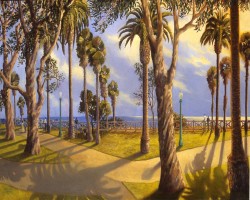The Most Iconic Comme des Garçons Runway Shows
Comme des Garçons is a Japanese fashion brand founded by designer Rei Kawakubo in 1969. Known for its avant-garde designs, deconstructed silhouettes, and innovative use of materials.

Comme des Garçons, the vanguard Japanese style house established by Rei Kawakubo in 1969, has reclassified design with its whimsical outlines, dismantled fitting, and extremist imaginative articulations. The mark has reliably tested customary ideas of magnificence, orientation, and wearability, making its runway shows the absolute most expected and broke down in the design world. Here, we investigate seven of the most notable Comme des Garçons runway shows that have made a permanent imprint on the style business.
Spring/Summer 1997, "Body Meets Dress, Dress Meets Body"
One of the most notable assortments in commedesgarcon-us.com' set of experiences, the Spring/Summer 1997 show acquainted the world with the now-famous "irregularities and knocks" assortment. This assortment highlighted cushioned, bulbous outlines that twisted the normal human structure, testing the regular comprehension of excellence and extent. The articles of clothing, fundamentally made of stretch gingham, seemed to develop surprising distensions, making a practically twisted yet captivating tasteful. This show cemented Rei a willing Kawakubo's standing as a creator to push limits and reclassify design's relationship with the body.
Fall/Winter 2005, "Broken Bride"
The Fall/Winter 2005 assortment, frequently alluded to as "Broken Lady," adopted a profound and reasonable strategy to wedding style. Kawakubo rethought wedding dresses, taking apart them with hilter kilter cuts, incomplete sews, and overstated volumes. The assortment investigated subjects of flaw, despair, and disruption of custom, making an agitating yet gorgeous depiction of affection and marriage. The obvious white outfits differentiated against the models' solemn articulations, making for a strong and tormenting runway experience.
Spring/Summer 2012, "White Drama"
The "White Show" assortment for Spring/Summer 2012 was an ethereal and reasonable magnum opus. Every one of the articles of clothing in the assortment were unmistakable white, investigating topics of birth, marriage, passing, and greatness. The models showed up as spooky figures, a few wearing cloak and others caught in sheer plastic vaults, summoning a feeling of delicacy and seclusion. The multifaceted subtleties of ribbon, unsettles, and hung textures made a wonderful yet frightful air. This show was a demonstration of Kawakubo's capacity to involve style as a narrating medium, creating pieces of clothing that discussed human encounters past their material structure.
Fall/Winter 2016, "18th-Century Punk"
Comme des Garçons' Fall/Winter 2016 assortment was a https://commedesgarcon-us.com/ conflict of history and resistance, mixing eighteenth century refined style with punk feel. The show included voluminous, sculptural outfits suggestive of Marie Antoinette's court style, however with an insubordinate edge. Rich brocades, misrepresented outlines, and dismantled components converged to make a dream that was both majestic and anarchic. This assortment exhibited Kawakubo's capacity to reference verifiable design while mixing it with a cutting edge, problematic energy, demonstrating that style history can be changed with new stories.
Spring/Summer 2017, "The Future of Silhouettes"
For Spring/Summer 2017, Comme des Garçons introduced perhaps of its most limit and sculptural assortment. This show was described by curiously large, vanguard pieces that obscured the line among attire and wearable workmanship. The assortment included overstated, cover like shapes, some looking like colossal blossoms or unique figures. These pieces of clothing frequently darkened the human structure totally, saying something about the development of style past regular wearability. The assortment was generally viewed as an investigate of the business' fixation on business practicality, reaffirming Comme des Garçons' obligation to unadulterated imaginative articulation.
Fall/Winter 2018, "The Gathering of Shadows"
Fall/Winter 2018 was one of Kawakubo's haziest and most puzzling arrangements. Named "The Social event of Shadows," the assortment embraced dark as its essential tone, with articles of clothing looking like protection, covers, and unique models. The outlines were impressive and forcing, making a feeling of secret and power. A few pieces included misrepresented shoulders and high collars, while others had a troubled, nearly dystopian quality. This show was a profound investigation of murkiness, both exacting and figurative, featuring topics of solidarity, grieving, and greatness.
Spring/Summer 2021, "The Phoenix Rises"
The Spring/Summer 2021 variety was a response to the overall crisis and weakness of the Covid pandemic. The assortment represented resurrection and flexibility, including sensational, organized pieces of clothing that evoked the picture of a phoenix coming to life. Striking reds, red hot oranges, and dynamic shapes conveyed a feeling of development and change. This assortment was an impactful indication of style's capacity to reflect and answer cultural movements, offering a message of trust through imaginative articulation.
Conclusion
Comme des Garçons' runway shows have reliably challenged show, pushing the limits of style, craftsmanship, and social editorial. Rei Kawakubo's visionary methodology has tested the standards of magnificence, outline, and capability, making every assortment a significant assertion on the potential outcomes of dress. Through her extreme trial and error and refusal to adjust to industry assumptions, she has guaranteed that Comme des Garçons stays quite possibly of the most persuasive and provocative brand on the planet. These famous runway shows are showcases of style as well as strong creative articulations that keep on motivating architects, specialists, and scholars across disciplines.
What's Your Reaction?
















